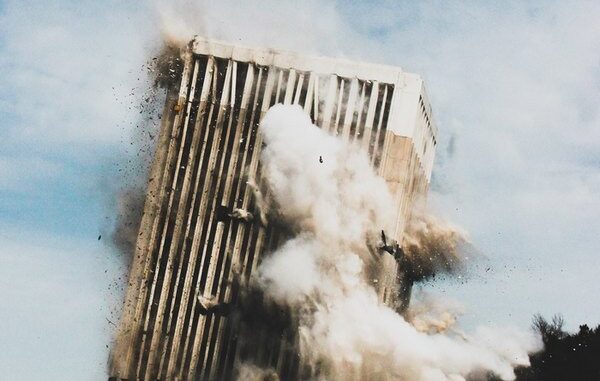
 – by Anil Pharande, Chairman – Pharande Spaces & President – CREDAI Pune-Metro
– by Anil Pharande, Chairman – Pharande Spaces & President – CREDAI Pune-Metro
Illegal construction pertains to any building or addition to an existing building which does not comply with the existing municipal or civil laws and has been built without proper permissions. It may or may not be built on encroached or otherwise illegally appropriated land. In India, both are usually true, and instances of building collapses here garner negative press globally each year.
It may seem like a typically Indian problem, in the past created by a combination of an acute housing shortage and collusion of shady politicians with unscrupulous fly-by-night builders. However, illegally constructed buildings do not necessarily cater to only the lower rungs of the social pyramid. In India, there have also been well-documented instances of luxury towers being erected either on encroached land or without the required building clearances.
Also, India is not the only country waging war against the scourge of illegal construction. This has been and continues to be a problem in many parts of the world, across developed and developing countries.
There is no shortage of examples of how illegal construction has hijacked cities’ real estate markets and indeed their overall potential. Here are a few:
Italy – Italy’s once scenic Palermo, which caught the spillover housing demand from nearby Sicily, saw a tremendous amount of what was referred to as ‘private construction’ for almost three decades between the 1950s and the 1980s between 1951 and 1961. This illegal construction boom happened under the active patronage of the organized crime syndicate known as the mafia.
Malta – In a more recent instance in the European island country of Malta, a luxury project consisting of 75 high-end units was illegally constructed in collusion between the developer and the local environmental protection agency. The case is still being fought out.
Brazil – In Brazil’s Rio de Janeiro, the infamous ‘favelas’ or illegally constructed slums have existed since the 19th century and continue to confound the city’s development authorities to the present day. Created and protected by local crime organizations, Rio’s favela slums are notorious for being densely packed, extraordinarily unsanitary and polluted, and breeding grounds for disease.
Turkey – Turkey has its own problems with what they call Gecekondus – homes constructed almost overnight without any clearances or permissions. The people who build these low-cost housing projects are usually migrants from Turkey’s rural areas seeking to settle down on the larger cities’ outskirts. Gecekondus – literally meaning ‘constructed overnight’ – exploit an interesting legal loophole in Turkish law.
This law prevents the authorities from tearing down or taking any action against people who manage to construct homes between late evening and early morning of the next day without being noticed by the law enforcement authorities. Instead, the authorities can only begin legal proceedings against such squatters, which usually pull on endlessly.
Jerusalem – In Jerusalem, illegal constructions have been taking place at an enormous scale for over a decade. These illegal constructions are invariably full-fledged buildings, built on plots over which the builders have no legal claim. The plots are usually land reserved for public utilities such as parks, schools, and places of worship, as well as on roads. Such buildings are constructed without the benefit of licensed architects and fall completely afoul of Jerusalem’s civic safety codes.
Bulgaria – Bulgaria, the 16th-largest country in Europe, has been plagued by illegal constructions in the middle of its famous reserved biodiversity zones. Abuse of various loopholes in the country’s laws has allowed unapproved buildings to crop up on the coastline of the Black Sea coastline. This has also led to the pollution of rivers and destruction of biodiverse areas. In Bulgaria’s famous Pirin National Park, illegal ski tracks have been laid to pander to winter tourists, destroying the natural habitat of protected plants and animal and plant species.
New York – Massive world cities like New York have their own problems. Just last year, an infamous NY slumlord (interestingly with an Indian name) was among three notorious real estate players who attracted heavy fines for exploiting the extreme shortage of affordable homes in the city. This person had to cough up USD 105,000 for illegally creating micro-residential units, known as SROs (single-room occupancies) in local real estate parlance, and renting them out.
These units have neither bathrooms nor kitchens, and the households that inhabit these homes must share such facilities with each other – a system that has long since been illegal in New York. This person owns and rents out several completely neglected, dilapidated buildings.
If all this sounds familiar, it is because most of these examples – mere tips of the global illegal construction iceberg – have ready representation in India. In our country too, city planning and development authorities wage a constant battle against this scourge. Even highly-planned cities like the Pimpri Chinchwad Municipal Corporation (PCMC) must regularly demolish illegally erected structures.
The Dangers of Illegally Constructed Buildings
Most illegal buildings tend to be unsafe. As we have seen with the annual collapses of illegally-constructed housing projects and unapproved structural changes and additions, circumventing local building codes, not engaging qualified architects, and using substandard or adulterated construction materials comes at a high cost to people living in these buildings. When they collapse, completely or partially, lives and possessions are lost.
Also, illegal constructions – shoddily built or not – invariably usurp land reserved for creating infrastructure and other public utilities. This impedes the movement of people and goods, which are critical for the welfare and prosperity of a city, create drainage blocks which cause urban flooding during the monsoon, and often present a significant health hazard since they are not professionally maintained.
Illegal buildings in cities like Mumbai and Pune often operate without proper water supply and subsist on pilfered electricity.
Because they are illegally constructed, such properties tend to be much cheaper than regular properties in the same area. Obviously, their developers had no long-term plans for these buildings and most abandoned them as soon as they were sold out. There is no legal recourse for homeowners in such buildings.
Many of such buildings were constructed after bribing the local civic authorities to look the other way, a fact which is invariably exposed sooner or later. When this happens, homeowners in these buildings must write off their entire investments.
The instances where illegal buildings are regularized are few and far between. Even if regularization is applied for under an amnesty scheme, the authorities will first conduct a structural audit to determine whether the building even qualifies in terms of safety. In most cases, such buildings are condemned because they are completely unfit for habitation.
Precautions for Homebuyers
While RERA has gone a long way in addressing the problem by making future illegal constructions impossible to pull off, it unfortunately does not apply retrospectively to older buildings developed before its implementation. Even today, countless urban Indians live in unsafe, legally and structurally doomed buildings that endanger their hard-earned money and their families’ lives.
Aspring homebuyers looking for good deals must conduct sufficient due diligence when considering an unnaturally cheap property. If the building has serious legal flaws, it may very likely be demolished in the future, and the property owners will not be compensated. In the meantime, their residents do not benefit from legal protection or municipal support.
Investing in a home must be done with complete awareness and should not be driven merely by the lowest rate. Always deal with reputed developers who have multiple successful projects in their portfolios. For newer buildings, a RERA registration is an absolute must and for older ones, a proper title search conducted by a good advocate will reveal the project’s legal status.





